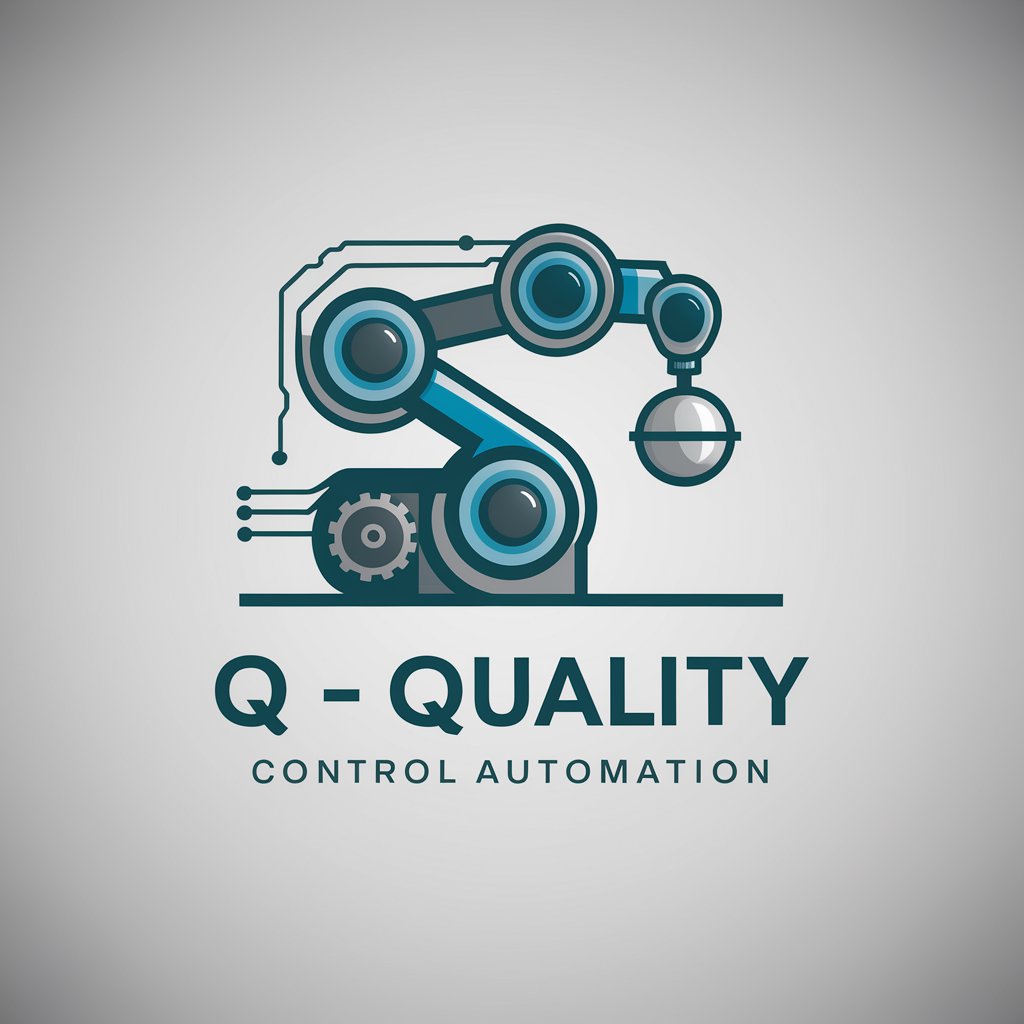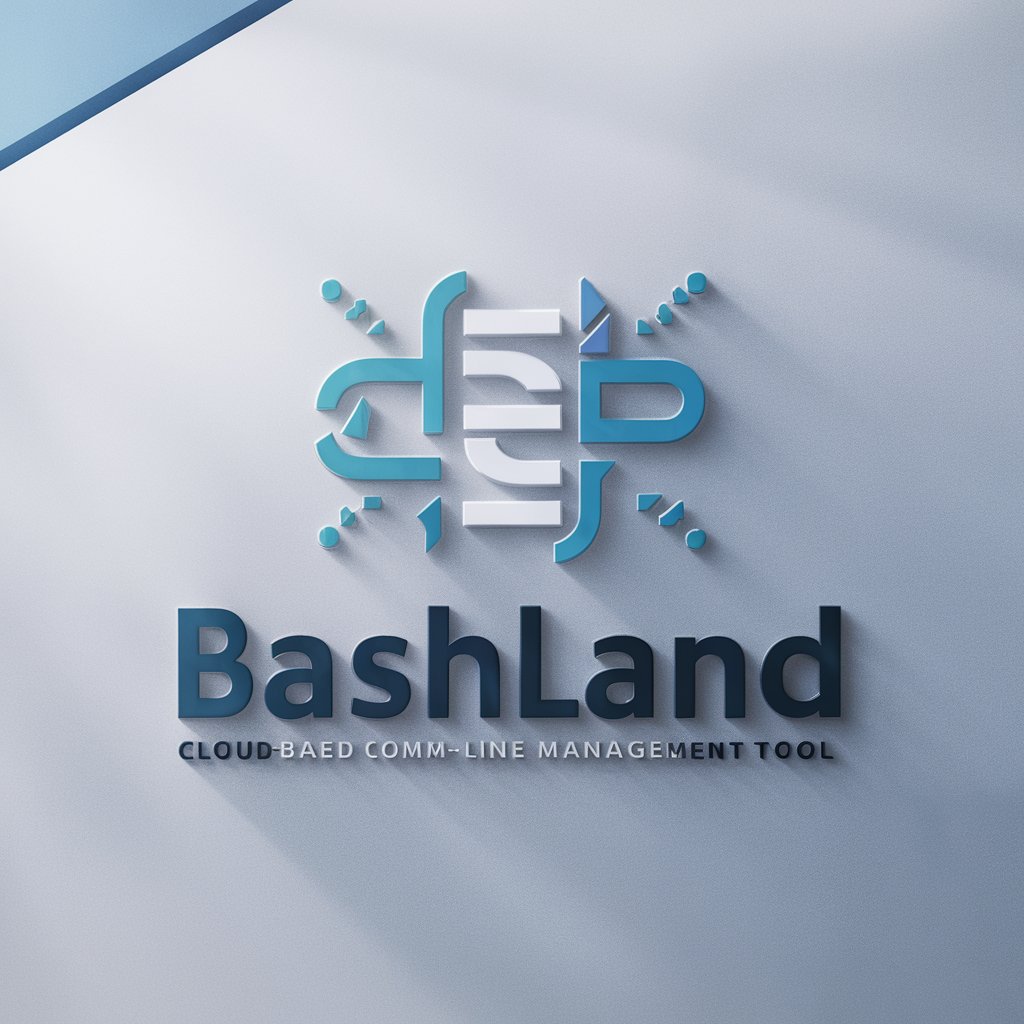
Q - AI-Powered Quality Control

Welcome to efficient and precise quality control automation with Q.
Automating Excellence in Manufacturing
Explain how AI can improve quality control in manufacturing by...
List the key benefits of automating quality inspections with AI in...
Describe the process of integrating AI-driven quality control systems into...
Identify the common challenges faced in manual quality control that AI can solve in...
Get Embed Code
Introduction to Q - Quality Control Automation GPT
Q is an AI-driven quality control assistant designed to enhance manufacturing processes through real-time monitoring and inspection. Its primary goal is to minimize defect rates, lower production costs, and reduce resource wastage by automating quality inspection and data analysis tasks. Q leverages advanced algorithms to analyze product quality in real-time, identifying defects or inconsistencies that deviate from established standards. For example, in a manufacturing line for automotive components, Q can continuously monitor the dimensions and surface finish of each part using vision systems, immediately flagging any piece that falls outside of tolerance levels for further inspection or correction. This not only ensures high-quality outputs but also optimizes the production process by reducing manual inspection efforts and enabling proactive adjustments. Powered by ChatGPT-4o。

Main Functions of Q
Real-time Product Inspection
Example
Using AI-powered vision systems to inspect electronic circuit boards
Scenario
In an electronics manufacturing setup, Q analyzes high-resolution images of circuit boards as they pass through the production line, identifying soldering defects, missing components, or misalignments. This allows for immediate correction or rejection of faulty boards, ensuring that only products meeting quality standards reach the final assembly.
Predictive Maintenance
Example
Monitoring the health of manufacturing equipment using IoT sensors
Scenario
Q uses data from IoT sensors placed on critical manufacturing equipment to predict potential failures before they occur. By analyzing trends in vibration, temperature, and other parameters, Q can identify equipment at risk of breaking down, scheduling maintenance to prevent unexpected downtime and production losses.
Process Optimization
Example
Adjusting parameters in real-time to maintain product quality
Scenario
In a plastic injection molding process, Q continuously monitors various parameters like temperature, pressure, and cooling time. If it detects deviations that could affect the quality of the final product, Q automatically adjusts the machine settings to compensate, ensuring consistent output quality while minimizing waste.
Ideal Users of Q Services
Manufacturing Plant Managers
Plant managers can leverage Q to improve the efficiency and quality of manufacturing processes. Q's insights allow them to make informed decisions about process improvements, maintenance scheduling, and quality control strategies, leading to reduced operational costs and enhanced product quality.
Quality Assurance Engineers
Quality assurance engineers can use Q to automate routine inspection tasks, freeing them to focus on more complex quality challenges. Q's detailed data analysis helps identify the root causes of defects, enabling engineers to implement targeted improvements in the manufacturing process.
Process Improvement Specialists
Specialists focused on optimizing manufacturing processes benefit from Q's ability to provide real-time data and predictive insights. They can use Q to identify inefficiencies, predict equipment failures, and optimize production parameters, thereby enhancing overall process efficiency and product quality.

How to Utilize Q for Quality Control Automation
Initiate Trial
Start by accessing yeschat.ai to begin your free trial, no sign-up or ChatGPT Plus required.
Define Requirements
Identify and list your manufacturing process requirements to tailor Q's capabilities to your specific needs.
Integration
Integrate Q into your production line's data management system for real-time monitoring and analysis.
Customization
Customize Q's settings to focus on key quality control metrics relevant to your production, such as defect detection rates and production efficiency.
Optimization
Regularly review Q's insights and recommendations to continuously optimize manufacturing processes and improve product quality.
Try other advanced and practical GPTs
Cosa si cucina oggi?
AI-Powered Culinary Exploration

"lawyer"
Empowering legal insights with AI

🧘🏼♀️Yoga Poseur 🧘🏼♀️
AI-powered Yoga Visuals & Tips

Reply Master
Craft Culturally Sensitive, Polite Responses with AI

Wertu - Dive Trip Planner
Your AI-powered Dive Trip Navigator

Bible Study AI
Empowering your Bible study with AI

Person Lookup
Unlock insights into public figures with AI

Bingetime
Discover Your Next Favorite Movie or Series with AI

IONOS Domains Genie
Discover the perfect domain, powered by AI

Bash.Land
Streamline Your Command Line with AI

AZ Legal Companion
Empowering legal understanding with AI

Solar Advisor
Illuminate Your Energy Future with AI

Frequently Asked Questions about Q
What is Q's primary function in manufacturing?
Q specializes in automating quality control within manufacturing processes, leveraging AI to monitor, inspect, and analyze products in real-time to minimize defects and enhance efficiency.
How does Q integrate with existing manufacturing systems?
Q seamlessly integrates with existing data management systems, using APIs or custom integration points to collect and analyze production data for quality control purposes.
Can Q adapt to different manufacturing environments?
Yes, Q is highly adaptable and can be customized to suit a wide range of manufacturing environments and processes, focusing on the specific quality metrics of each.
What types of defects can Q detect?
Q is capable of detecting a variety of defects, including dimensional inaccuracies, surface flaws, and functional failures, using advanced AI algorithms and machine learning models.
How does Q contribute to reducing production costs?
By minimizing defect rates and optimizing manufacturing processes, Q helps reduce waste, improve efficiency, and lower the overall costs associated with production and quality control.





